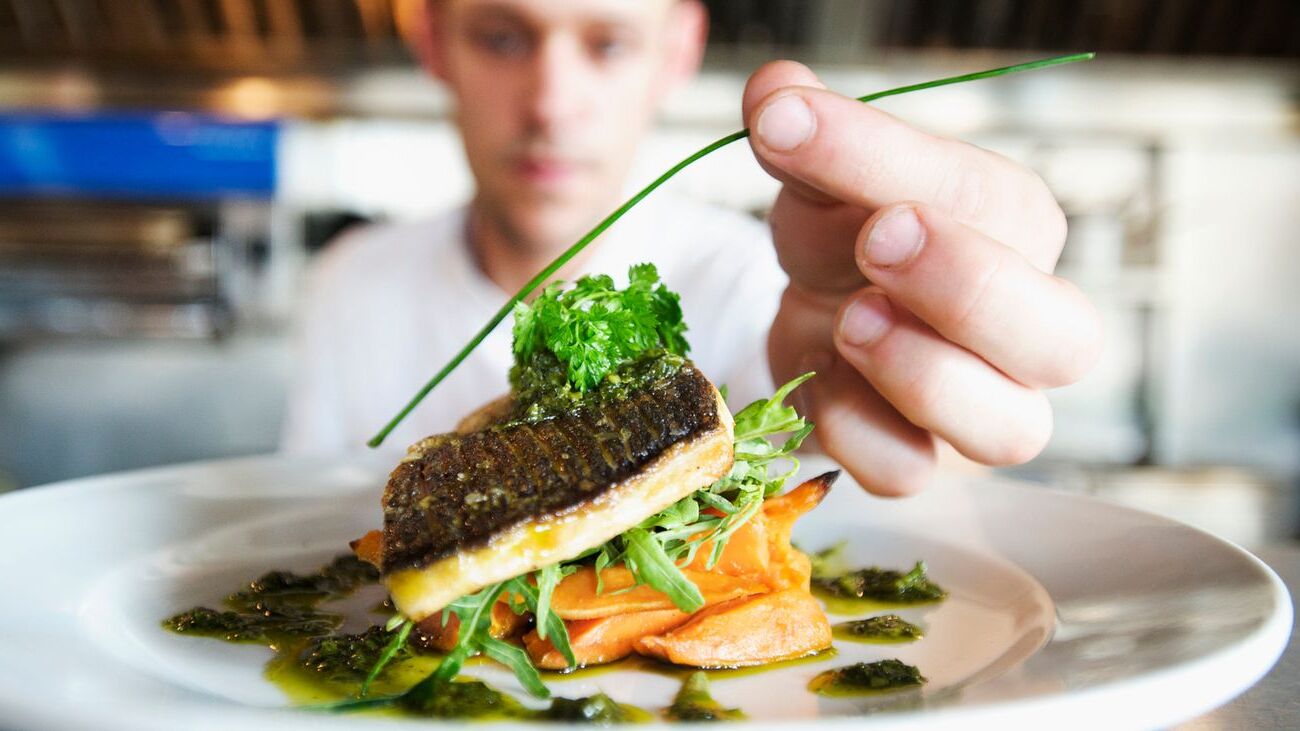
Garnishes aren't just for show; they can elevate a dish's flavor, texture, and visual appeal. Ever wondered why chefs meticulously place that sprig of parsley or lemon twist on your plate? Garnishes serve multiple purposes, from adding a pop of color to enhancing the overall dining experience. They can be as simple as a sprinkle of herbs or as elaborate as a carved vegetable. Some even carry cultural significance, making them more than just a pretty addition. Whether you're a budding chef or a food enthusiast, understanding the role of garnishes can transform your culinary creations. Ready to dive into 21 intriguing facts about these culinary embellishments?
What is Garnish?
Garnish is more than just a decorative touch on your plate. It enhances the visual appeal of dishes and can add flavor, texture, and aroma. Here are some fascinating facts about garnish that might surprise you.
-
Garnish Origins: The word "garnish" comes from the Old French word "garnir," meaning to equip or furnish.
-
Ancient Practice: Ancient Romans used garnishes like herbs and flowers to decorate their feasts.
-
Functional Garnish: Some garnishes, like lemon wedges with seafood, serve a functional purpose by adding complementary flavors.
-
Edible Flowers: Edible flowers such as nasturtiums, pansies, and violets are popular garnishes that add color and a unique taste.
-
Microgreens: Tiny, young greens known as microgreens are trendy garnishes packed with nutrients and flavor.
Types of Garnish
Garnishes come in various forms, each adding a different element to the dish. Let's explore some common types.
-
Herbs: Fresh herbs like parsley, cilantro, and basil are classic garnishes that add a burst of freshness.
-
Citrus Zest: Grated citrus zest from lemons, limes, or oranges can add a zesty kick to both sweet and savory dishes.
-
Vegetable Garnish: Thinly sliced or julienned vegetables like carrots, radishes, and cucumbers can add crunch and color.
-
Fruit Garnish: Slices of fruits such as strawberries, kiwi, or mango can add sweetness and visual appeal.
-
Sauces and Drizzles: Artistic drizzles of sauces like balsamic reduction or chocolate syrup can elevate the presentation.
Cultural Garnishes
Different cultures have unique garnishing traditions that reflect their culinary heritage.
-
Japanese Garnish: In Japan, garnishes like shiso leaves, pickled ginger, and daikon radish are common in sushi and sashimi dishes.
-
Indian Garnish: Indian cuisine often uses garnishes like fresh coriander leaves, mint, and edible silver foil called "varak."
-
Mexican Garnish: Mexican dishes frequently feature garnishes like chopped cilantro, lime wedges, and sliced radishes.
-
Italian Garnish: Italians love using fresh basil, grated Parmesan cheese, and a drizzle of olive oil as garnishes.
-
Middle Eastern Garnish: In Middle Eastern cuisine, garnishes like pomegranate seeds, sumac, and fresh mint are popular.
Garnish Techniques
The way garnishes are prepared and applied can make a big difference in the final presentation.
-
Knife Skills: Mastering knife skills to create precise cuts and shapes is essential for professional-looking garnishes.
-
Plating: The art of plating involves arranging garnishes in a way that enhances the overall look of the dish.
-
Edible Art: Some chefs create intricate edible art using garnishes, turning food into a visual masterpiece.
-
Temperature Matters: Using garnishes at the right temperature, such as chilled herbs on a hot dish, can enhance the dining experience.
-
Balance: Achieving a balance between the garnish and the main dish is crucial. The garnish should complement, not overpower.
Fun Facts about Garnish
Here are some quirky and fun facts about garnishes that you might not know.
- World Record: The largest edible garnish ever made was a 1,500-pound salad created in California in 2016.
The Final Scoop on Garnishes
Garnishes do more than just make food look pretty. They add flavor, texture, and even a bit of fun to your dishes. From the classic parsley sprig to the exotic edible flowers, garnishes can elevate any meal. They’re not just for fancy restaurants either; you can easily use them at home to impress your family and friends.
Remember, a good garnish should complement the dish, not overpower it. Fresh herbs, citrus zest, and colorful vegetables are great choices. Don’t be afraid to get creative and try something new. Whether you’re cooking a simple dinner or preparing a feast, the right garnish can make all the difference.
So next time you’re in the kitchen, think about how a little extra touch can transform your meal. Happy cooking!
Was this page helpful?
Our commitment to delivering trustworthy and engaging content is at the heart of what we do. Each fact on our site is contributed by real users like you, bringing a wealth of diverse insights and information. To ensure the highest standards of accuracy and reliability, our dedicated editors meticulously review each submission. This process guarantees that the facts we share are not only fascinating but also credible. Trust in our commitment to quality and authenticity as you explore and learn with us.


